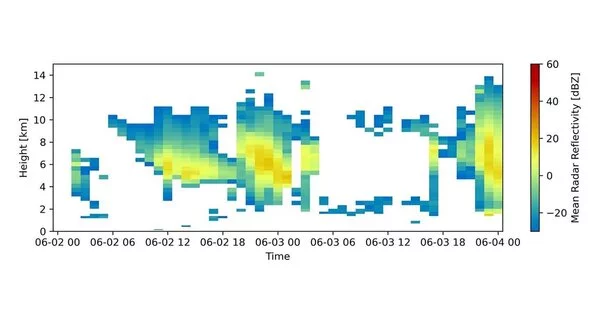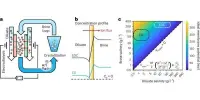The Earth Model Column Collaboratory is a free and open-source research platform that uses complex data and weather observations to generate highly accurate climate models and forecast predictions.
Clouds come in a variety of shapes and sizes. While we may think of puppies, whales, or breaking waves, climatologists see them as massive bundles of water in various forms that contribute to daily weather and, eventually, climate. A cloud’s number, shape, and size of liquid drops and ice crystals, for example, will determine how it scatters light or emits and absorbs heat.
Despite the size of clouds, many of these dynamics take place on a small scale. Researchers rely on computer-generated climate models to better understand how all those imaginary creatures produce the effects that they do. These models can combine data from various weather instruments, physics calculations, and other observations to improve our understanding of how the atmosphere works.
However, due to computing power constraints, climate models must simplify the way clouds are represented. This introduces uncertainty into both cloud behavior and climate change projections. Typically, model results are compared to observations in order to improve cloud representations. However, the climate model and observation communities have historically worked separately, sometimes making the process hard to navigate.
Open access like this will help us better balance comparisons between models and observations. It will also serve as a much-needed link between these historically divided communities.
Robert Jackson
To bridge the gap between these two communities, climate scientists at the U.S. Department of Energy’s (DOE) Argonne National Laboratory, Pennsylvania State University, and the NASA Goddard Institute for Space Studies developed an easier way to compare cloud models with observations from weather instruments. The result is a modeling platform and weather instrument simulator called the Earth Model Column Collaboratory (EMC2).
Results from current climate models don’t directly comparable to those from radars, satellites, and other sensors whose signals can’t directly detect key cloud parameters like liquid water content and number of drops. Instead, they detect microwave and visible light reflected by clouds and precipitation. As an instrument simulator, EMC2 can convert the more detailed model-simulated cloud parameters to these weather instrument signals.

Another complication in climate modeling is the size of the geographic areas researchers want to study. Represented as points on a grid, these areas are typically around the size of a major metropolitan area. However, clouds and precipitation can cover areas as small as a neighborhood. These smaller areas of clouds and precipitation are sampled by radars and satellites. To solve this problem, EMC2 helps represent the spatial variability of cloud cover inside each grid cell on smaller scales like those covered by the weather instruments. This smaller reference point allows climate scientists to evaluate models more accurately.
What makes EMC2 even more useful is that it integrates all of these tools into a single software package. Designed as open-source software, it allows both researchers and the public to easily add, use and modify models and observations. Further information about the methods, design, as well as where EMC2 can be downloaded are available in the paper published in Geoscientific Model Development.
Using an approach developed for NASA, Argonne scientists plan to use EMC2 in collaboration with DOE’s Energy Exascale Earth System Model (E3SM), a high-resolution model designed to examine the most detailed dynamics of climate-generating behavior. Researchers hope to evaluate the model’s ability to simulate thunderstorms over Houston.
Using meteorological observations from one of DOE’s Atmospheric Radiation Measurement (ARM) programs, EMC2 will help climate scientists reduce uncertainties in rainfall predictions by improving the representation of thunderstorms in E3SM. In addition, EMC2 is currently being used to evaluate weather forecasts during the DOE ARM TRacking Aerosol-Cloud interactions ExpeRiment (TRACER).
In short, scientists at Argonne developed EMC2 in collaboration with Penn State and NASA to facilitate comparisons of climate and weather models with observations from weather instruments. EMC2 will serve as a focal point for collaboration between climate modelers and observers.
“Open access like this will help us better balance comparisons between models and observations,” said Robert Jackson, an Argonne assistant atmospheric scientist and model collaborator. “It will also serve as a much-needed link between these historically divided communities.”
















